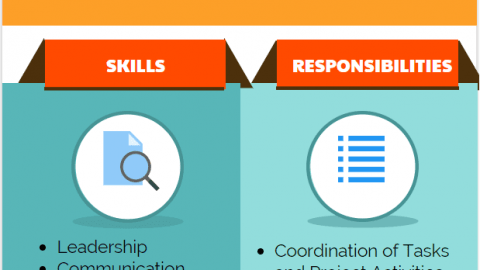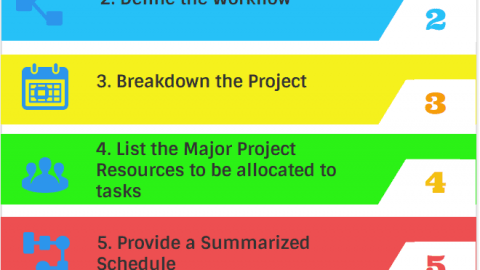Project Management: The 5 Hottest Hacks for 2023
What are some of the freshest and most promising approaches in the field of project management currently gaining momentum in companies around the world? Small independent organizations, medium-sized firms, and large corporations are all discovering that the field of project management is neither static nor based 100% on scientific managerial principles. That’s good news. Because it means the discipline is growing in unique and productive ways around new project management hacks and project management trends.
Table of Contents
Leaders at all levels and in every industry are experimenting with ideas and concepts that weren’t even on the agenda two or three years ago. This transformation of project management is particularly noticeable in startups, micro firms, and home-based entrepreneurship. What are the most promising new methods? In addition to a renewed emphasis on the importance of planning, managers are exploring ways to promote employee education, using more remote teams, avoiding expansive scope, welcoming the era of big data, and finally paying serious attention to digital security. Here are more details about the latest project management hacks that are gaining ground among work teams everywhere.
Renaissance of Planning: Project Management Hacks
Somewhere during the past decade, planning was forgotten by many die-hard project management types. There are new project management trends and project management hacks. That’s ironic because the entire concept of making a plan is at the very heart of the definition of academic managerial science. But as 2023 gets underway, leaders in every industry are being forced, in a way, to rediscover the fine art of planning. The process includes several critical steps and should include as many team members as possible.
Top-notch plans reflect hours of painstaking effort, attention to minute details, and educated guesses about every eventuality of a prospective project. Imagine a construction company attempting to begin work on a commercial office building without having blueprints in hand. It’s the same situation for any organization that sets forth on various projects without structured, realistic plans.

Project Management Trends: Entrepreneurs Who Facilitate Education
One of the most promising outside-the-box trends during the 2020s is a more cohesive relationship between entrepreneurs of indie companies and their team members. Innovative owners of small startups can help team members get the education they need to become more productive. There are several tactics for achieving the goal. But the most direct and effective one is to cosign for a team member’s college or graduate school loan.
From a young employee’s perspective, it’s much easier to get a student loan with a cosigner than without one. The reason is that the cosigner generally has a better credit score and longer credit history than the primary applicant. This strategy’s other potential benefit is that cosigned loans typically come with lower interest rates. This means the student ends up paying a significantly lower total amount over the life of the loan agreement.
Relying on RVTs (Remote Virtual Teams)
Take one guess as to why RVTs enjoyed a rebirth of popularity in 2020. If your answer included the word COVID, then you’re on the right track. However, remote teamwork and virtual groups within companies were already gaining ground before the pandemic hit. It’s just that the red alert in the form of a global virus pushed the timing into overdrive. More than a billion working people were forced to take refuge in their homes in early 2020. That sent management leaders to the drawing board, and they saw no alternative to fast-forwarding the use of RVTs on almost every significant job.
Fortunately, software developers and other IT experts rode the wave and began introducing upgraded apps to increase productivity and systems. They aim to help businesses deal with the ramped-up need for video and audio features necessary for the transformation. It’s instructive that even after the pandemic abated, the majority of RVTs remained in place. Workers came to enjoy the idea of having more flexibility, privacy, and free time. There’s something alluring to the prospect of never again having to face rush-hour traffic on the way to and from a bustling downtown or suburban office complex.
Minimizing Scope Creep
What’s worse than abandoning a project midway through due to lack of funds? Realizing that the goals have changed so much. So that the scope of work is completely different than it was on day one. If there’s one common pitfall in every industry’s approach to project management, it’s scope creep. The pernicious growth of more and more goals to what was formerly a well-thought-out idea.
Today’s managerial leaders can eliminate scope creep by writing a hard definition of the project in the plan’s documents. Being adaptable and flexible are two qualities that make for effective business leaders. However, at some point, there has to be a line in the sand concerning how much, if at all, a given project can expand its mission.
Getting Serious About Digital Security
In every industry and among organizations of all sizes, the majority of daily work and data storage is moving to the cloud. It’s an inevitable, unstoppable transition in the way commercial entities conduct daily operations. For that reason and many others, there’s an obvious need for heightened data security for project management teams. How are smaller and newer entities dealing with this unavoidable need?
There are two common responses, each one geared to unique aspects of organizations. When it’s affordable, managers hire in-house IT pros who focus on digital security. When that move is out of range of the company budget, outsourcing is the next best technique for securing data, processes, trade secrets, and proprietary processes. It’s the same with customer and employee data. Anything stored in the cloud calls for additional protective measures.

Victor Z Young is a Civil Engineer with 35 years of experience working alongside the executive team of various construction companies. Victor specializes in construction insurance, delay analysis, performance analysis and engineering. He holds a Doctor of Project Management from Northwestern University.










